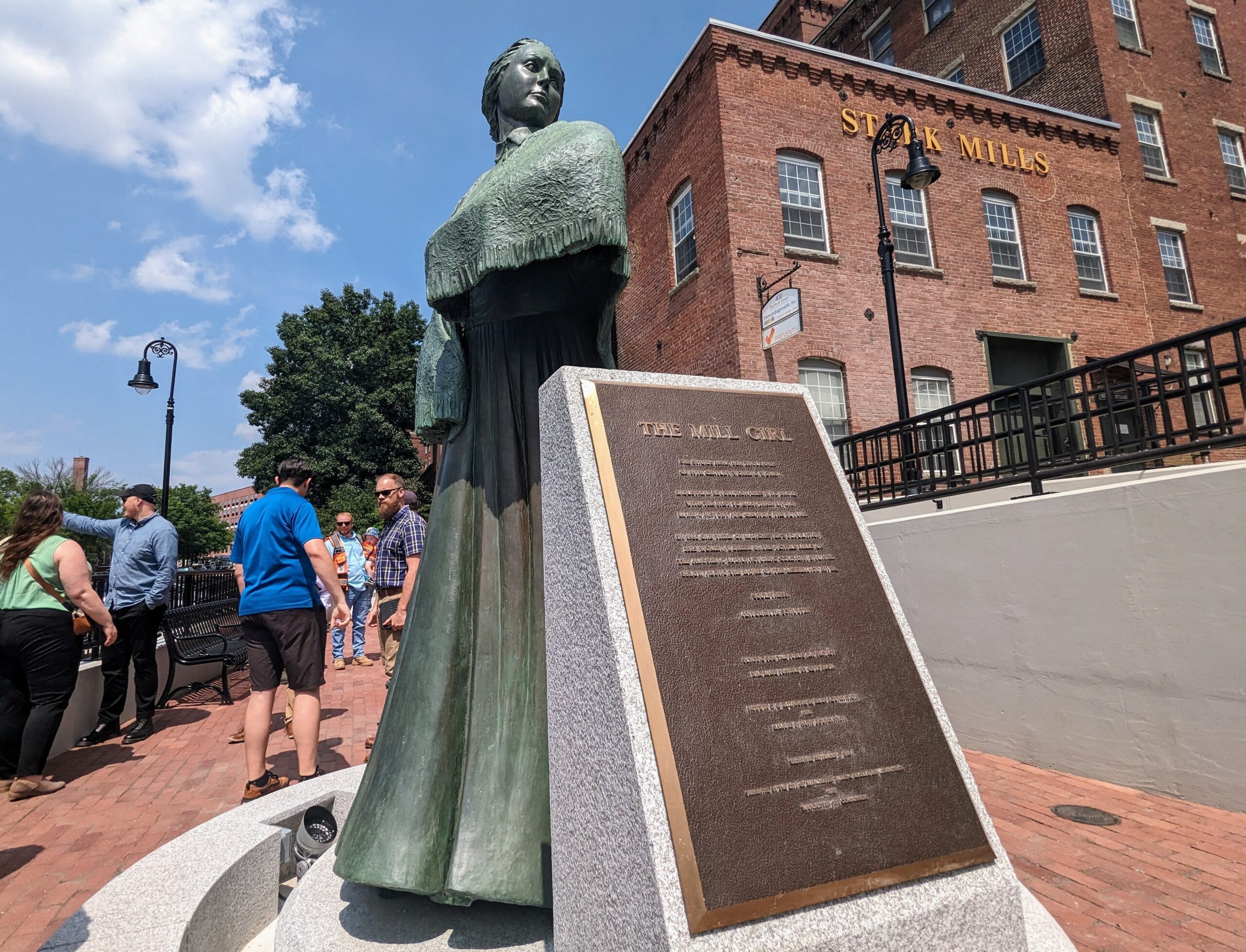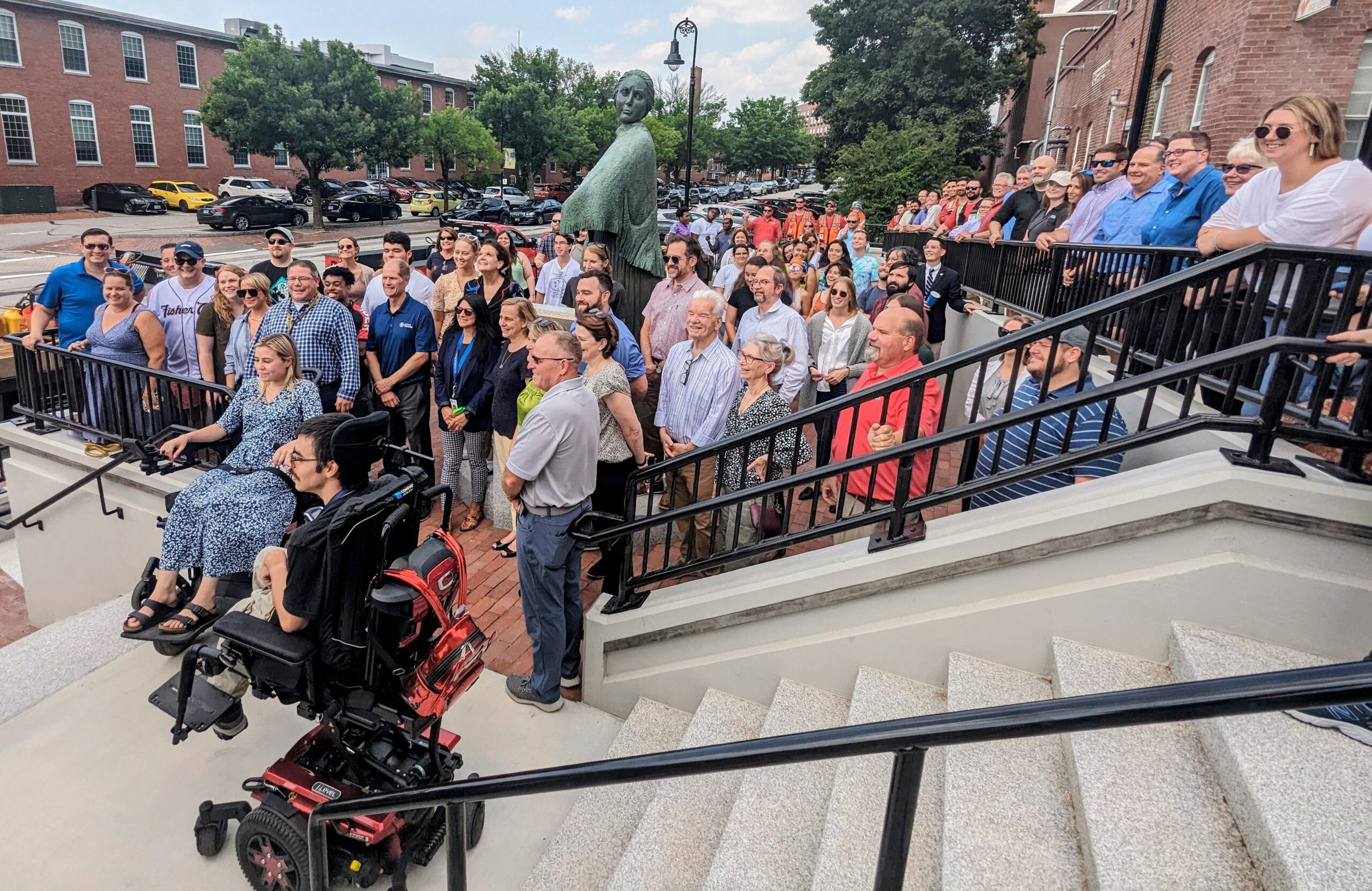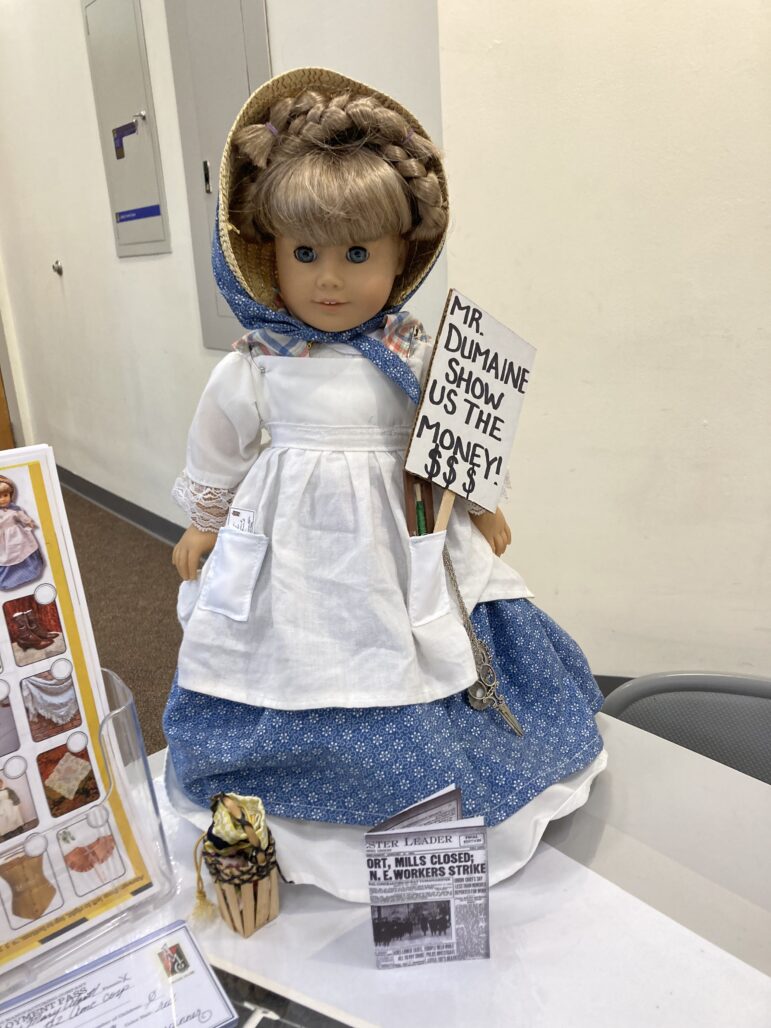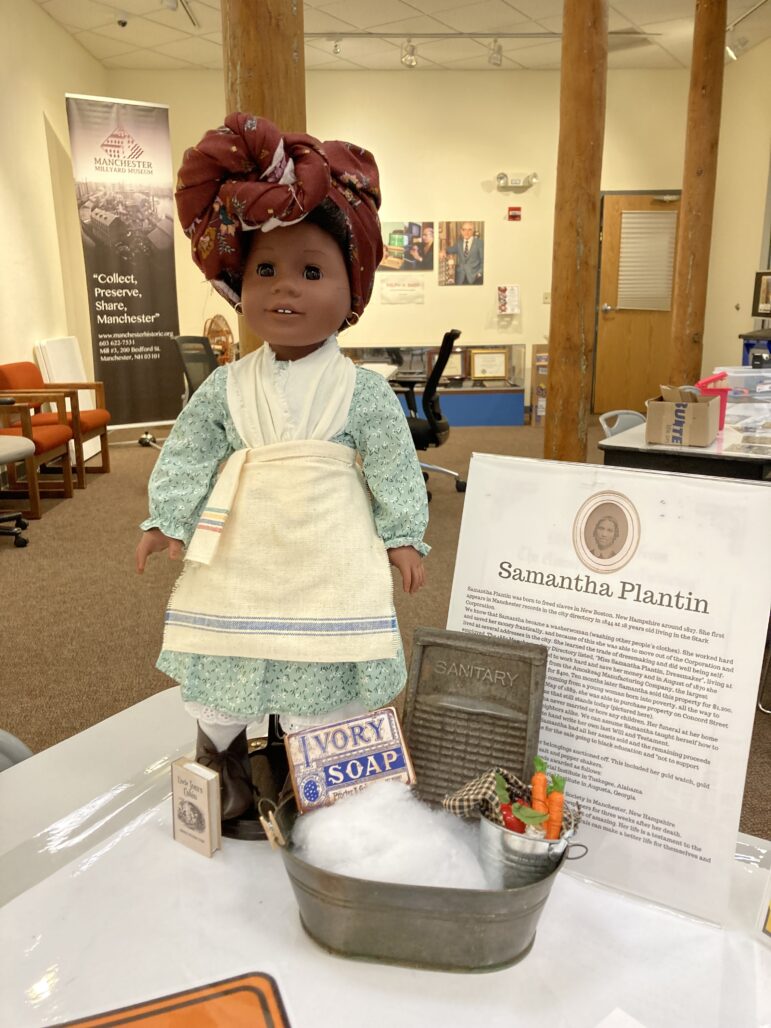
MANCHESTER, NH – The Mill Girl was looking refreshed – her flowing patina-green skirt glinting in the steamy midday sun. She was the center of attention among a throng of admirers – even though she is nothing new.
The 10-foot-tall bronze representation of a female mill worker has been a fixture in the mill yard for more than 35 years. What’s new – and what drew a crowd of more than 100 to Commercial Street Wednesday – is her environment.
Thanks to a rehabilitation project to improve public access from Commercial to Bedford streets, the Mill Girl now sits atop a granite base surrounded by mood lighting and a zig-zag ramp, plus a wider staircase and her informational plaque is now next to her.
Jaime Nadeau, Bangor Savings Bank Elm Street Branch Manager, was among those who showed up for the hoopla, which included a ribbon-cutting ceremony and a Kodak-moment group shot so that, in 100 years from now, those inhabiting the Queen City will appreciate our 21st-century reverence for the past and consideration of future generations.
“The first time I saw her I was just walking through the mill yard and there she was,” said Nadeau, who later learned what the Mill Girl statue represented to the city and her situational significance. “It’s nice to see it all redone, and it’s nice that there’s a plaque. When I first saw it I had no idea why she was there.”

Manchester Connects, a grassroots community action group working to reshape downtown partnered on the project with the city architect Steve Hebsch and Matt Low, COO of engineering firm Hoyle, Tanner & Associates, to redesign the area that would relocate the statue, build an Americans-with-Disabilities-Act-compliant ramp, install colored light fixtures in a new set of stairs, and an expanded seating area.
Mill Girl was created in 1988 by Eliot, Maine, sculptor Antoinette Prien Schultze, who says she was excited about the prospect of refurbishing her Mill Girl when she was approached about doing the work 18 months ago.
“She was in much better shape than I thought, except that the patina where she was welded all came through because of the dripping water. But I cleaned her up and used little files in the areas where she was connected and repatinaed her. It took a while. It’s a big job – she’s a big girl,” Schultze says.

It’s hard to believe it’s been 35 years since the statue was erected, she said.
“A year before I was commissioned to do the statue I attended a meeting about it. I didn’t know anything about the Manchester mills and when I realized they were interested in the mill girls specifically, I did some research,” said Schultze during a recent phone interview.
She tapped the Manchester Historic Society and made an immediate connection between her own daughters, who had grown up on a farm, and the mill girls, all of whom probably left their family’s farms to step into the world of manufacturing.
“I remember how my girls wanted to get away from the farm and I imagined these young mill girls coming to the big city from farms to a place where they were paid for their work, and given other things, like a library,” says Schultze.

“My idea was that she’s walking toward the entrance of the mill, walking forward and having courage but then she stops to look back and contemplate where she comes from and she does not forget who she is,” says Schultze. “She was very meaningful to me as when I was a girl of 13 my father died and I couldn’t cry, for all those years. Yet, when I created Mill Girl it made me look back at my own life and I was finally able to mourn for my father. That meant a lot to me.”
Although over the decades her style has shifted away from representational art to the more abstract, Schultze – a former sculpture instructor for the New Hampshire Institute of Art – says there is always symbolism involved in how she conveys the spirit of a sculpture.
“When I did figurative work it wasn’t because I was so in love with the figures but because I wanted to portray a certain feeling or emotion, so when I was able to transfer into abstract work I found I was still able to work the human spirit in there, to get to something I wanted that was pleasing to me,” Schultze says.
Her work has been pleasing to the city, as well, based on years of positive feedback.
“It’s been very rewarding. I’ve gotten many letters from women whose mothers and grandparents worked in the mills. It’s been a lovely experience. I’m so happy she worked well for everybody. Sometimes people do public work and it’s not accepted so well,” Schultze says.
Now 79, Schultze is still actively creating at her studio. Her current project is an art installation featuring families to be placed in Portsmouth, where her Italian immigrant grandparents made their home. It’s rewarding to honor her own family’s New Hampshire roots through a project that will allow the community to learn about the experiences of early immigrants to the Seacoast.

And the rededication of the Mill Girl has also provided an educational opportunity for local youth through the Millyard Museum.
According to museum educator Kristy Ellsworth, the special seven-week program was created in partnership with Girls at Work, a non-profit organization that operates in the same building as the museum, and is dedicated to building skills, skill-building and empowerment of tween and teen girls.
Ellsworth said the “Women of the Mills” program allows them to portray what life was like for girls living in Manchester in the 1800s.
The weekly two-hour sessions – currently in week four of seven – cover topics like uniform standards, working conditions, weaving and the scope of job opportunities for women in the mid-1800s.
“We highlight several real women from Manchester’s industrious past including Margaret Knight, the 12-year-old inventor, and Samantha Plantin, the first black female landowner in Manchester,” Ellsworth says. She has been busy creating period doll clothes which the girls have been able to use to dress American Girl dolls as they explore the historic themes around mill work.
“We hope that through this program modern girls really understand the struggles and adversities that women went through to get to where we are today. We hope that they can relate to some of the things that they learned in the museum and have an appreciation for these amazing women that came before us, whose stories are largely untold,” Ellsworth said.









